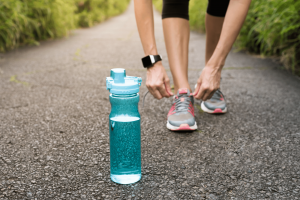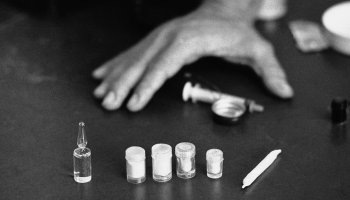Detoxing at home is a matter of personal choice. However, you have to keep in mind that it comes with certain risks.
Oxycodone is a powerful opioid substance that influences physical dependence when you use it for a couple of weeks. Getting rid of it in the body causes a negative reaction called withdrawal syndrome.
Detox outcomes are always unpredictable. Don’t slack off from caution even when most people say that opioid withdrawal does not commonly lead to death.
You have to think that every person’s detox experience is unique. If you or your loved one is suffering from extreme addiction, professionals won’t recommend home detox. It’s too dangerous and you’re prone to relapse due to absence of guidance.
It is best to detox in an inpatient facility so that you can be attended to round-the-clock. Immediate medical assistance can also be provided when the need arises.
Once you choose to detox at home, you really have to prepare yourself for the extreme discomfort that comes with the process unless your treatment is medically supervised.
You have to also ensure that there is enough support for you at home, or else, you will most likely fall for relapse if you do it all on your own.
How To Safely Detox Oxycodone
 Your safety should be your top priority during detox. Whether you opt for inpatient, outpatient, or home detox, experts emphasize that medical supervision is essential.
Your safety should be your top priority during detox. Whether you opt for inpatient, outpatient, or home detox, experts emphasize that medical supervision is essential.
Its main benefits include a proper assessment of your condition and precise intervention to relieve your pain and prevent you from experiencing a relapse.
The following are the two main things that must be done to safely surpass your detox phase.
Taper Off Your Doses
Quitting cold turkey is never a good idea. Its outcomes are overwhelming and definitely, and you will fail to endure the pain. It will only lead you to take your usual dose to find relief.
You have to remember that when dealing with opioids, a fatal overdose is very likely. This does not only happen upon excessive use of the drug but also when you take your usual dose after a period of withdrawal.
Almost 75% of drug overdose deaths in the United States are from opioids, and usually, the fatal ones are synthetic opioids. Remember that Oxycodone is a semi-synthetic opioid and this is only prescribed when non-addictive painkillers fail to work.
To prevent experiencing intense pain during detox, taper off your doses. Your doctor is of great help in determining which dose to start and when to adjust them to prevent you from extreme pain.
Take Your Medications As Prescribed
 Substitution therapy refers to the use of long-acting opioids to aid in opioid withdrawal. These are FDA-approved drugs that help decrease cravings and limit the intensity of withdrawal pain.
Substitution therapy refers to the use of long-acting opioids to aid in opioid withdrawal. These are FDA-approved drugs that help decrease cravings and limit the intensity of withdrawal pain.
You cannot purchase these medicines without a prescription since these are also controlled drugs. They are very helpful during detox and even up to sustaining sobriety. To ensure your safety, you have to take them as prescribed.
For severe cases especially those with co-occurring mental health issues during detox, antidepressants are also given as a prescription. To manage this more effectively, therapies are coupled with the treatment.
There are also over-the-counter drugs that you can rely on to relieve certain pain such as headaches, muscle pain, and gastrointestinal problems. When you detox at home, you can reserve a few supplies to soothe you when necessary.
Home Remedies for Oxycodone Detox
There are other steps you can take to keep your detox experience at home more bearable. But again, before you decide on a home detox, make sure you pass the following conditions:
- Your level of addiction is not severe.
- You have no pre-existing ailments.
- You have enough support at home.
- You have sought medical supervision.
In case you miss one of these criteria, then it is better to do your detox in inpatient rehab. You can be closely monitored by medical experts in the facility and also, and you can keep in touch with a therapist when necessary.
Most experts stress the essence of joining individual and group therapies in conjunction with medically assisted detox care. If you prefer to detox at home, you can plan how you can attend sessions consistently.
If your doctor tells you that home detox is fine, then here are some things you can do to alleviate withdrawal pains.
Exercise
 This helps increase your level of endorphins, the natural pain relievers in the body. You can take a walk or jog, but try not to strain yourself with heavy exercise. Always listen to how your body responds while exercising. Don’t push yourself too hard since your body is still coping with major changes in your system.
This helps increase your level of endorphins, the natural pain relievers in the body. You can take a walk or jog, but try not to strain yourself with heavy exercise. Always listen to how your body responds while exercising. Don’t push yourself too hard since your body is still coping with major changes in your system.
Stay Hydrated and Nourished
Take lots of fluids from time to time to avoid dehydration, and always include fruits and vegetables in your meal. This routine will truly boost your immunity and help you recover fast. Some people take supplements too. You can ask your doctor as to which ones are safe for you to take.
Be Comfortable
Relax and don’t stress yourself while detoxing. Fill your mind with optimism. You can read a book, cook meals, or do any activity at home that keeps your mind active. This is also one way of fighting off your cravings for the drug. It would be great to include yoga and meditation in your routine.
Rest
Make sure you give yourself enough sleep and rest. When certain pain continues to persist despite taking your medication, you may find relief in taking warm baths specifically for headaches and body pain. Some people also recommend acupuncture as an effective means to relieve pain.
When to Seek for Help
You need to seek help when you find yourself too weak to carry on. When you experience diarrhea and vomiting, you can be vulnerable to dehydration.
Dehydration is one of the major causes of death during detox. If you experience hypertension and increased heart rate, or when you struggle with food intake because you will vomit what you eat, better seek medical help right away.



